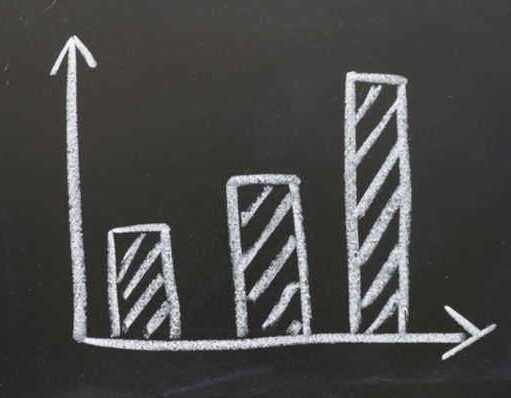
Overall, downward trends in absolute numbers of crimes are truly a source of inspiration for America. However, what happens after arrests is not as comforting.
Unfortunately, for certain subsets of the population, delinquency and detention are still persistent and on the rise. Black males in their teens are especially at risk for being arrested for underage crime and are responsible for some half of all juvenile crimes in the United States.
Females are also becoming more and more frequent delinquents. While incidents of crimes in certain areas of crime have gone down for girls in comparison to boys, they are seeing spikes where their male counterparts are seeing drops. Overall, though, the efforts of local law enforcement, juvenile court and delinquency prevention agencies have proven to be positive influences on national percentages.
Success Rates
Although juvenile courts and detention facilities have no legal responsibility to care for delinquent children once they reach the age of majority, the moral imperative of our nation to ensure the welfare of all our citizens should prompt us to have concern for what happens to them when they leave the embrace of juvenile law, assuming they are not retained in a State or Federal prison as a result of being found guilty of a criminal offense.
From most indications, this is a very big concern indeed. Though the stated aim of secure juvenile facilities is reform, the data does not lie: detainees and minors committed to a detention center are more likely than non-detainees to be arrested as an adult.
In addition, increased propensity toward being arrested is only part of the story, as freedom from incarceration is not a wholly reliable barometer of success. In terms of school and work, individuals with a juvenile record are frequent underachievers compared to their non-criminal competitors. Less than 20 percent of juvenile delinquents have been found to graduate high school or obtain their GED, and those high school graduates more than likely will not find employment within a year of receiving their diploma.
As for other standards of living, juvenile offenders similarly tend to find problems. Juvenile delinquency is a solid predictor of low-income household and poverty, as well as divorce.
Family Patterns
In pointing the finger at causes and risk factors for child delinquency, many people will look to the child’s environment. Certainly, the living conditions in a particular area and/or one’s association with gangs and other delinquents makes one that much more likely to be sucked into a world of violence and crime.
Becoming Repeat or Adult Offenders
What makes manifestation of this phenomenon more lamentable is both how early in childhood it can begin and how long-lasting the effects of juvenile delinquency can be. The earlier children get involved with the juvenile justice system, the more probable it is that they will return for multiple court appearances and periods of residence in detention centers. As regards rates of juvenile delinquents becoming adult offenders, it is naturally harder to make connections because juvenile records are typically sealed.
Drug Abuse
Though most detention centers and other secure facilities have treatment programs in place for those contained within and detention does create a physical barrier for inmates from the accessibility to narcotics and other drugs, drug abuse and drug dependency in youth offenders is not a problem that can be solved overnight. The good news for America is that anti-drug programs are correlated with a lower number of arrests for underage possession of drugs and driving under the influence.
However, for the existing juvenile delinquent population, the fight against drug use is indeed a struggle. Though in-house drug abuse treatment may prove effective in the short run, long-term abstinence during recovery is far from a guarantee: short-term treatment or failure to complete treatment may only yield a stronger possibility of return. Furthermore, the juvenile trying to cope without one or more drugs will almost certainly have to endure withdrawal. This is assuming that a facility has the means to reliably implement treatment.
Statistics suggest that a small minority of juvenile delinquents forced to live outside of home truly get the services they need. Moreover, other statistics on the efficacy of pre-release drug treatment and post-release aftercare programs are well documented, putting some juvenile drug abusers at a serious disadvantage to their maturation.
Gangs
Some parents may be simply concerned that they are not victimized personally by gang violence, but their children may be at serious risk for membership in a gang and arrest, noting the violent tendencies of these groups and the relative frequency at which children are arrested as compared with an adult. It is hard to place exact statistics on total affiliation of American juveniles within gangs for reasons including the notion of secrecy in gang involvement, lack of an ironclad definition of what constitutes a gang, and whether or not someone is a full member of a gang.
Still, surveys and other forms of gathering data are responsible for some semblance of an idea of the problem’s scope in the United States. Some 750,000 American children are estimated to be gang-affiliated in some way, most of them male, and many Hispanic or black.
Critics of these statistics suggest that the gang problem is not a serious one, as the absolute numbers are low when viewed alongside that of the total child population and under the assumption that gang violence is not widespread, confined mainly to urban areas. However, while this may be true, the growing incidence of gang-related incidents in the suburban United States and the very nature of gang-related crimes is rather startling.
More than half of all violent crimes in America involve gang violence. Moreover, though most gang members belong for less than a year, gang affiliation may persist past periods of confinement in correctional facilities or may even intensify as a result of it. Numerous institutions have reported outbreaks of violence related to gang conflict and those acts are likely to continue into adulthood for juveniles in gangs.
Mental Illness
The term “child offender” may be individuals found guilty as a child, often a “status offense” that is only illegal by virtue of the offender’s age. Either way, child offenders are often mentally ill in some way. Regarding the latter category of offenders, an estimated two-thirds of juvenile delinquents possess some sort of mental or psychological problem, and a similar percentage of re-entries into the juvenile justice system are marked for treatment.
What makes these elevated rates of mental illness so unfortunate is the fact they often occur alongside other problems that can obscure the need to address serious those chronic mental deficiencies. Drug abuse
cases and reports of mental health complications are highly related, extremely likely to occur together, and develop within a short amount of time.
In addition, the ratio of available staff child psychologists in detention facilities and children in need for mental health interventions and other services is decidedly disadvantageous to the juvenile. Sadly, children are either neglected by health programs or receive generic treatment that does little to assuage their symptoms.











